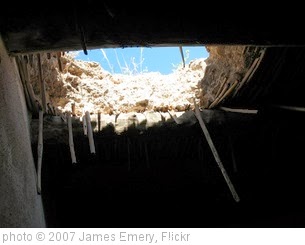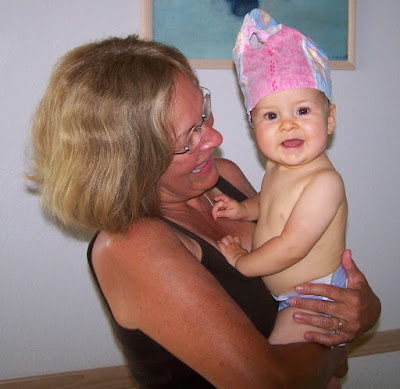Being Seen
Over the course of my life I've met a few highly visible celebrities. Years ago Noel Paul Stookey came to perform at the church Paul and I attended and we were invited to go backstage. The meeting was memorable but embarrassing. Noel, an exceedingly gracious man, extended his hand towards me as I walked into his green room; pulling mine from from my coat pocket, all manner of mommy-trash fell out--a pacifier, tissues and coins. Before I could even respond, Noel had already bent his tall frame in half to retrieve the linty bits and pieces. I also shook hands with Billy Graham when he co-led a funeral with my dad, got close enough to wave at Richard Nixon on Easter Sunday in South Florida, brushed by Bill Clinton as he drove past me in a golf cart and stood in a very long line to meet Chaim Potok and have him sign my hard-cover copy of Davita's Harp. While visiting Good Morning America several years ago, Paul and I managed to get signatures from several of the hosts, including Tony Perkins whom I accidentally called Spence, the name of the weather guy he replaced. Tony's surprised reaction and Paul's look of mortification didn't register with me until later.
So familiar was I with these people having listened to their voices on radio and records, read their books, and lamented their policies, I could easily have forgotten that they didn't know me at all. To them I was a face in the crowd that none would likely remember--except perhaps for Tony.
Recently I revisited the story from Luke 5 about the man whose friends, refusing to be faces in the crowd, made themselves and the man they carried famous for all time. The story is familiar enough: Jesus is teaching in a house where a crowd has packed itself so tight the friends can't find a space to enter. Undeterred, the men climb up up onto the roof and break open a hole through which they lower their friend. While this is a story about Jesus' power to overcome our helplessness, it's also a story about seeing and being seen--and perhaps about the failure to see. I wonder as I read, placing myself as a face in the packed crowd, what I would have noticed since the story features a variety of view points (and points of view) and responses. Each person's experience has something to do with location, focus, and even bias.
The owner of the house, I imagine, would have noticed the hole as it opened in his roof; maybe he protested. Some, though perhaps not all, surely had some view of the friends balancing on the roof above, sweating and maybe trembling as they carefully lowered their friend. Most of the crowd should have been able to see the frightened face of the figure on his swinging bed. While only the day before lying close to the ground, invisible to most, he was now so highly visible I have to wonder if he was even recognized. The Pharisees, having claimed the best seats in the house and now perhaps wearing some of the debris from the roof, are watching Jesus carefully, though I suspect they didn't really see him at all. Suspicion and jealousy clouds our view into a person's heart.
Jesus, however, sees everything. He sees through the man's powerless body to his wounded soul. He sees and honors the faith of the friends who wait above. And his insight doesn't stop there; he sees the hot hearts of the Pharisees and hears their unspoken accusations.
In her book Altars in the World Barbara Brown Taylor invites the reader to encounter others by focusing on someone we routinely meet but risk missing as a person because they are doing some mundane service for us--like handing us change. "Here is someone who exists even when she is not ringing up your groceries, as hard as that may be for you to imagine," writes Ms. Taylor. "When this person looks at you, look back at her; just meet her eyes when you thank her." Sometimes, she says, all a person needs to know is that she has been seen.
Luke's story begins with a tightly packed crowd, refusing to give access to a man and his friends. Had it not been for the courage and faith of those friends, all--including me--would have missed the surprising encounter with Jesus. When we are part of a crowd, we can miss a lot; we tend to forget that the defenseless man on display is a human being who, before he was taken with palsy, had a different identity--perhaps a father, husband, artisan, or farmer. We typically turn our backs to helplessness in the case we might see ourselves. Sometimes we don't really want to see. But Jesus, facing his own day of powerlessness, is never afraid to look. Even in the shadow of his cross, Jesus looks upon and recognizes, not a paralytic, but a friend.



Comments